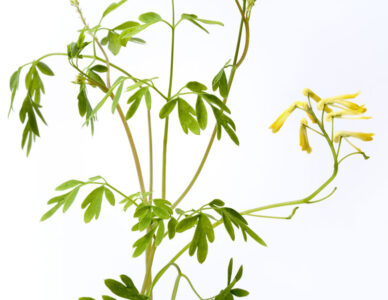How to Build Your Own Bubble Rock for Backyard Birds to Enjoy
By Mary Jo Bowling, Houzz
When we wrote about Sharon Sorenson and her recent book, Birds in the Yard Month by Month, questions about her backyard bubble rocks started pouring in. First, people wanted to know where to buy them. Then, after finding out they were homemade, they wanted to know how to make them. Due to popular demand and the generosity of the woman many have dubbed the Bird Lady, we bring you step-by-step instructions for a fountain that will have your yard aflutter even in winter.
Charles and Sharon Sorenson, original photo on Houzz
Photos by Charles and Sharon Sorenson
In the original article, Sorenson talked about her bubble rocks that gurgle in all seasons, thanks to a submersible heater.
Here it is during the cold weather that gripped Southern Indiana earlier this year. Sorenson and her husband, Charles, live outside of Mount Vernon, and they’ve spent years watching and photographing birds. Here, a mourning dove, two bluebirds and five American goldfinches demonstrate how birding can be a year-round sport.
In that article, she said: “Putting in the water feature made a big difference in the number of birds that visit our yard, and moving water was necessary for our land to be designated as a certified wildlife habitat by the National Wildlife Federation.”
Why a bubble rock?
Sorenson says there are two reasons birds flock to bubble rocks.
1. Moving water is a bird magnet.
“Birds can hear moving water, and it’s much easier to find,” she says. She doesn’t have much use for traditional birdbaths — shallow bowls of water that sit atop a tall pedestal. “Those kinds of things aren’t natural, and the birds don’t recognize them,” she says. “And if they are migrating, they don’t have time to figure out it’s a water source.”
2. In the bird world, nothing beats a good bath in clean water.
The second reason is the cleanliness of the water source and of the birds. “Moving water is cleaner,” Sorenson says. “Birdbaths get really messy, really fast. Birds soil the water with their droppings and feathers — and you would have to scrub them out twice a day to keep them clean.”
Birds love a good bath as much as many of us do. “Every bird likes clean feathers,” Sorenson says. “Clean feathers are warmer and better for flying. When they are molting, a bath helps them shed feathers. Birds want a bath every day, even in really cold weather.”

Charles and Sharon Sorenson, original photo on Houzz
To make her own bubble rock, Sorenson gathered these materials:
? A reservoir tub, about 40-gallon capacity
? Two or three flat, stackable rocks, each drilled with a hole. (“A top stone with undulating surfaces can create tiny pools for birds to bathe,” says Sorenson.)
? A 4-foot-long vinyl tube (¾-inch exterior diameter, ½-inch interior diameter)
? 18 pieces of 3- or 4-inch-diameter PVC pipe, cut ½ inch shorter than the depth of the reservoir tub
? Wire mesh, the kind used in plasterwork
? River rock to cover the mesh
? Electric cord rated for direct burial
? 250-watt submersible heater with thermostat
? A fountain pump that pumps approximately 120 gallons an hour. (Sorenson uses a pump made by smartpond but says there are many brands of similar quality.)
Note: The pump and the submersible heater shown are off-the-shelf items from a garden supply store designed for this purpose. To build this project, Sorenson followed the directions on the packages. If you are unsure about the process, contact a licensed electrician to assist you

Charles and Sharon Sorenson, original photo on Houzz
1. Dig a hole and place the tub in it. If you’re unfamiliar with electrical wiring, definitely hire a licensed pro to help you with the installation. Some suggestions from Sorenson:
? Place the bubble rock where it will be visible from windows and also near an electrical outlet with a GFCI (ground fault circuit interrupter).
? Set the reservoir so its lip is 2 to 4 inches above ground level. This will keep rain from washing debris and mud inside.

Charles and Sharon Sorenson, original photo on Houzz
2. Group the pipes into threes and stand them upright in the bottom of the tub.
3. Run an electrical cord from the pump and heater to an outlet. Sorenson buried her wires after checking for utilities.
George Premo, an electrical contractor and principal at Premo Electric, says to make sure that you use electric cords rated for direct burial. “Direct-burial cords are made for being put in the earth,” he says. “You want to bury them at least 6 to 12 inches underground, and this will prevent them from being tripped on or caught in a lawn mower.”
Premo, who is licensed by the state of California to teach electric apprenticeships, and Sorenson both stress the importance of making sure cords are plugged into a GFCI-protected outlet.

Charles and Sharon Sorenson, original photo on Houzz
4. After attaching the tube to the pump, place it and the heater in the tub.
5. Cut mesh and place it so it covers the tub. Cut a hole in the mesh and thread the tube through it and the holes in the rock. Cut another, larger hole in the mesh to provide access to the heater and pump. “This allows you to do maintenance without dismantling the whole thing,” says Sorenson.
6. Dress the top of the mesh with river rock. “The rock should allow water to run back through to the reservoir tub,” says Sorenson.
7. Turn on the water, step back and wait for the birds to arrive.

Charles and Sharon Sorenson, original photo on Houzz
Once a year Sorenson uses a wet vacuum to empty the reservoir and then rinses it out with a hose. Here, clean water is enjoyed by two American goldfinches and a chipping sparrow.
In the wintertime she keeps the water moving by setting the heater to approximately 40 degrees Fahrenheit. As you can see, two eastern bluebirds and six American goldfinches were enjoying the warm water during a cold snap earlier this year.
Sorenson says that installing such a water feature is well worth the effort (and certainly, these eastern cardinals, mourning dove and bluebird would agree). In her book she describes a scene that many would consider better than a top-rated sitcom: “Hummingbirds hover to drink from the edge, bluebirds jostle with goldfinches for position near the ‘bubble,’ robins arrive in families to sip and splash, and juncos bathe in leisure, freshening up after their travels. The hub-bub sometimes gives me a chuckle as I watch the little guys vying for a drink or a bath, lining up in pecking order to await their turn, or pushing their faces into the bubble.”








